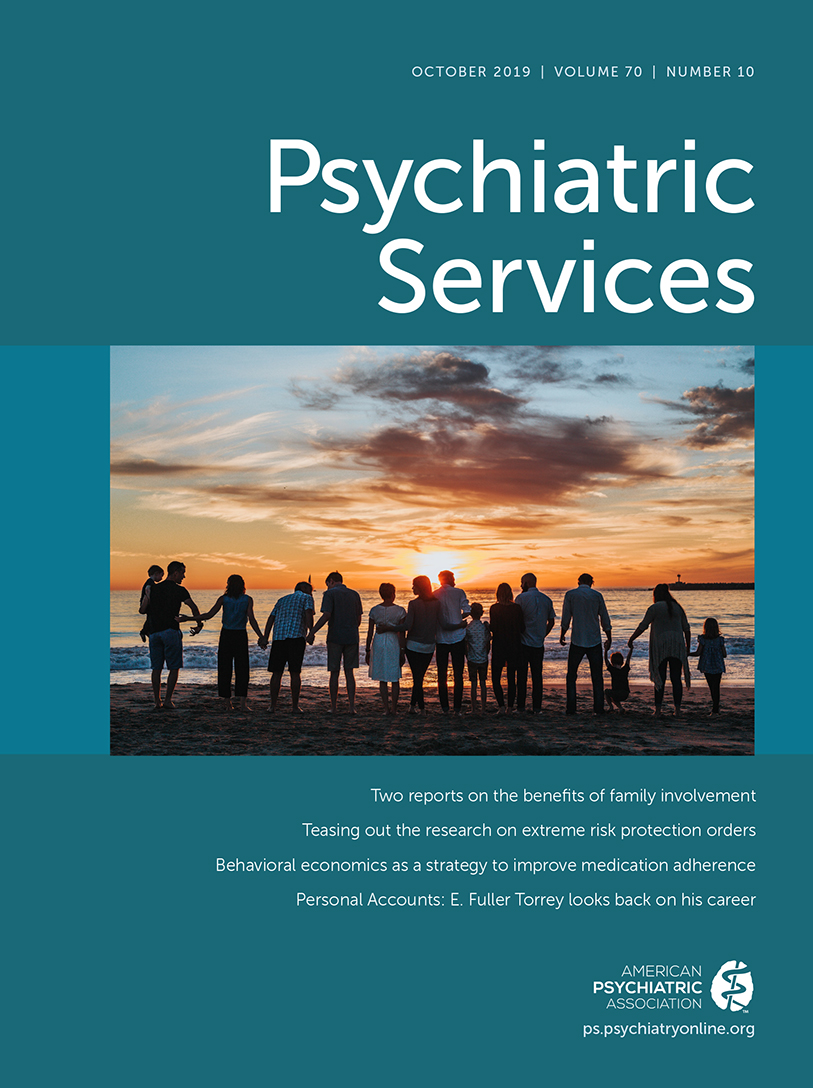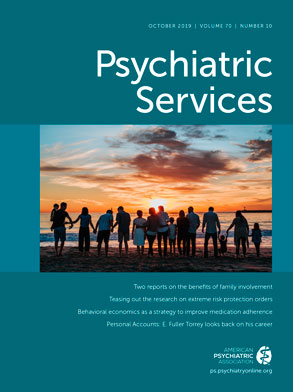Medication adherence is a challenge in all of health care. If not addressed, its worldwide impact will continue to grow because of the increasing burden of chronic diseases in a context of better global health care and longer life expectancy. In the field of mental health, poor adherence has been associated with increased risk of relapse, use of emergency rooms, hospitalization, suicide attempts, violence and legal problems, as well as poor social and occupational functioning (
1,
2). To address this unmet need, financial reinforcement interventions based on behavioral economic principles are emerging as a potential strategy to enhance medication adherence in severe mental illness.
Principles of Behavioral Economics
Behavioral economics, as an academic discipline, focuses on understanding why investors, companies, and individuals make financial decisions that sometimes are not entirely rational, conscious, or fully aligned with their apparent best interest. Applied to medicine, principles based in behavioral economics could help in explaining why we sometimes make irrational, harmful decisions when faced with an apparently obvious behavioral challenge (i.e., light up a cigarette or not, take a treatment as prescribed or not). Present bias, a concept central to behavioral economics, suggests that any future benefit is heavily underestimated when compared with a present challenge. For example, the gratification obtained from a delicious but unhealthy meal in the present outweighs the potential future consequences in terms of cardiovascular health (
3). Understandably, the immediate inconvenience of adhering to medications that may even have potential side effects, especially if one is experiencing no obvious symptoms, often far outweighs the long-term, distant benefits of better health outcomes.
To overcome present bias, financial incentives have been implemented in a wide range of disorders as a strategy to enhance medication adherence (
4), significantly improving treatment compliance with a medium to large overall effect size. In the field of mental health, voucher-based financial incentives under the scope of contingency management strategies have been successfully used in substance use disorders (
5)—focusing, however, in reinforcing abstinence. Only recently this strategy has been used to enhance medication adherence in severe mental illness.
Application in Severe Mental Illness
Shortly after two successful pilot studies were reported (
6,
7), the first cluster-randomized, stratified, and controlled trial to assess the effectiveness of financial incentives to improve medication adherence in severe mental illness was published (
8). In this study, 73 assertive outreach teams across the United Kingdom were randomized to either providing financial incentives or treatment as usual. The teams were stratified according to the socioeconomic characteristics of the area in which they operated. For this study, 141 non- or partially adherent patients with schizophrenia, schizoaffective, or bipolar disorder consented to participate and were subsequently assigned to either the intervention group or the control group based on the outreach team from which they received care. Patients in the intervention group were offered £15 ($19) for each depot injection over a 12-month period. Participants in the control condition received treatment as usual.
Adherence was estimated as a percentage of depot injections received versus the total number prescribed in the defined period, also known as the medication possession ratio (MPR). Adherence to treatment during the intervention period was significantly higher in the group receiving financial incentives than in the control group (adjusted difference in means=11.5%; p=0.003), leading to an average adherence of 85% in the experimental group. However, patients in the intervention group returned to baseline levels during the first 6 months of the postintervention follow-up period and remained stable for the entire 2-year follow-up (
9), suggesting the nonsustainability of improvements once the incentives are stopped.
More recently, a multicenter, open-label, randomized controlled trial (
10) was conducted in the Netherlands to assess whether patients with schizophrenia, schizoaffective disorder, or other psychotic disorders would benefit from financial incentives to improve adherence to depot antipsychotic treatment. Adherence was also estimated by using the MPR during the 12-month intervention period. Independent of their previous level of adherence, 169 patients were randomly assigned to treatment as usual or the addition of a financial reward every time that they received their prescribed depot medication. The amount of money received per depot depended on the frequency with which the depot was administered, which ranged from one to four times per month, but the maximum reward was 30€ ($34) per month. For example, patients receiving treatment every 2 weeks were paid €15 ($17) per depot injection administered, patients receiving a weekly injection received €7.50 ($8) per week, and so forth. After 12 months, financial incentives were stopped and both groups were followed for another 6 months. In this study, financial incentives also were associated with greater improved adherence in the intervention group compared with the control group (adjusted difference in means=14.9%; p<0.001). After incentives were discontinued, the positive effects on medication adherence decreased, but adherence levels remained slightly higher in the intervention group (adjusted difference in means=6.5%; p=0.047).
These results suggest that small incentives can be useful tools to increase medication adherence in severe mental illness but must be continuously implemented to be effective. However, because of the limited number of studies conducted so far using this strategy, results must be interpreted with caution. First, only patients receiving long-acting injectables have been studied. This is entirely reasonable, given that long-acting injectables should already have been considered as a treatment alternative in the context of partial or nonadherence (
11). Additionally, adherence to long-acting injectables is relatively easy to measure using the MPR. Administration is immediately assured and confirmed by a health care professional, unlike oral treatment, for which measuring precise adherence remains a challenge (
12). Consequently, the effect of financial incentives for patients receiving other antipsychotic formulations, as well as other non-antipsychotic treatments, remains understudied. Second, inclusion criteria generally limited the scope of the study to already nonadherent patients. Although this is clearly a subgroup of patients who could benefit from strategies to enhance adherence, the fact that completely nonadherent patients were not included limits the generalizability of the results.
Additionally, all studies were open label. Blinding does not appear to be possible because of the characteristics of the intervention, involving direct monetary compensation, which may introduce a bias when rating subjective measures. However, the primary outcomes of all studies are objective measures of adherence and therefore not affected by unmasking-induced bias. Last, patients were paid in cash directly after the administration of the treatment, so the effectiveness of other methods of compensation such as cards, bank transfers, or the use of newer technologies requires further exploration.
Even though the reported increase in adherence rates is substantial, neither of the two randomized studies found a subsequent improvement in clinical outcomes such as severity of symptoms or hospitalization rate, although one study (
8) reports improvements in reported quality of life. This could be due to sample size and to the relatively short period of incentivization, which may not be sufficient to capture infrequent events such as hospitalizations. It is also worth mentioning that the benefit of the intervention appears to decline after the final payment and does not seem to be long-lasting, suggesting the need for continuous reinforcement, which appears to be consistent with previous findings in the context of contingency management strategies (
13).
Implementation Challenges and Future Directions
The use of financial incentives raises ethical concerns that need to be addressed (
14). When implementing this strategy, measures must be taken to ensure that patients are consenting freely and not out of pure financial need. In our view, the incentive amount should not exceed a threshold that could function as financial aid. That would not be the purpose of this strategy, as it would attract mostly patients with no or low income. Or, even worse, already adherent patients could be tempted to lower their adherence to participate in such programs. However, the incentive offered must also be appealing enough to be able to generate the desired behavioral response. Patients affected with severe mental illness are a particularly vulnerable population, in which monetary incentives should be offered in a tailored manner, with clear and predefined operating procedures known to the clinical team.
Despite the aforementioned limitations, the available data suggest that modest financial incentives can be used successfully to enhance medication adherence in severe mental illness and should encourage further research. Financial incentives can help overcome what behavioral economists call present bias through a modest compensation that incentivizes decisions consistent with both patient- and doctor-desired long-term goals, such as minimizing the chances of a relapse that could be clearly deleterious for the patient’s well-being.
There are already two very well designed randomized clinical trials clearly indicating that patients with severe mental illness can benefit from this approach. However, we do not yet know the right amount of compensation, how long the payments should last, the subgroup of patients that can benefit the most, or how this approach can be implemented in a variety of diverse clinical settings and health systems. More studies and implementation strategies are needed, particularly with longer follow-up periods, to be able to detect improvements in relevant, patient‐related clinical outcomes. The effectiveness of other strategies based in behavioral economics, such as loss aversion, should be studied, as well. Larger, naturalistic studies including the full range of degrees of nonadherence and, ideally, other formulations such as oral antipsychotics, need to be conducted. In addition, better tools for reliably measuring real-time, daily adherence are needed. Nonetheless, offering financial incentives should be considered as a strategy to enhance adherence to treatment and increase system-level savings, but such efforts will also need to be progressively tailored and personalized to be optimally effective and ethically acceptable.

